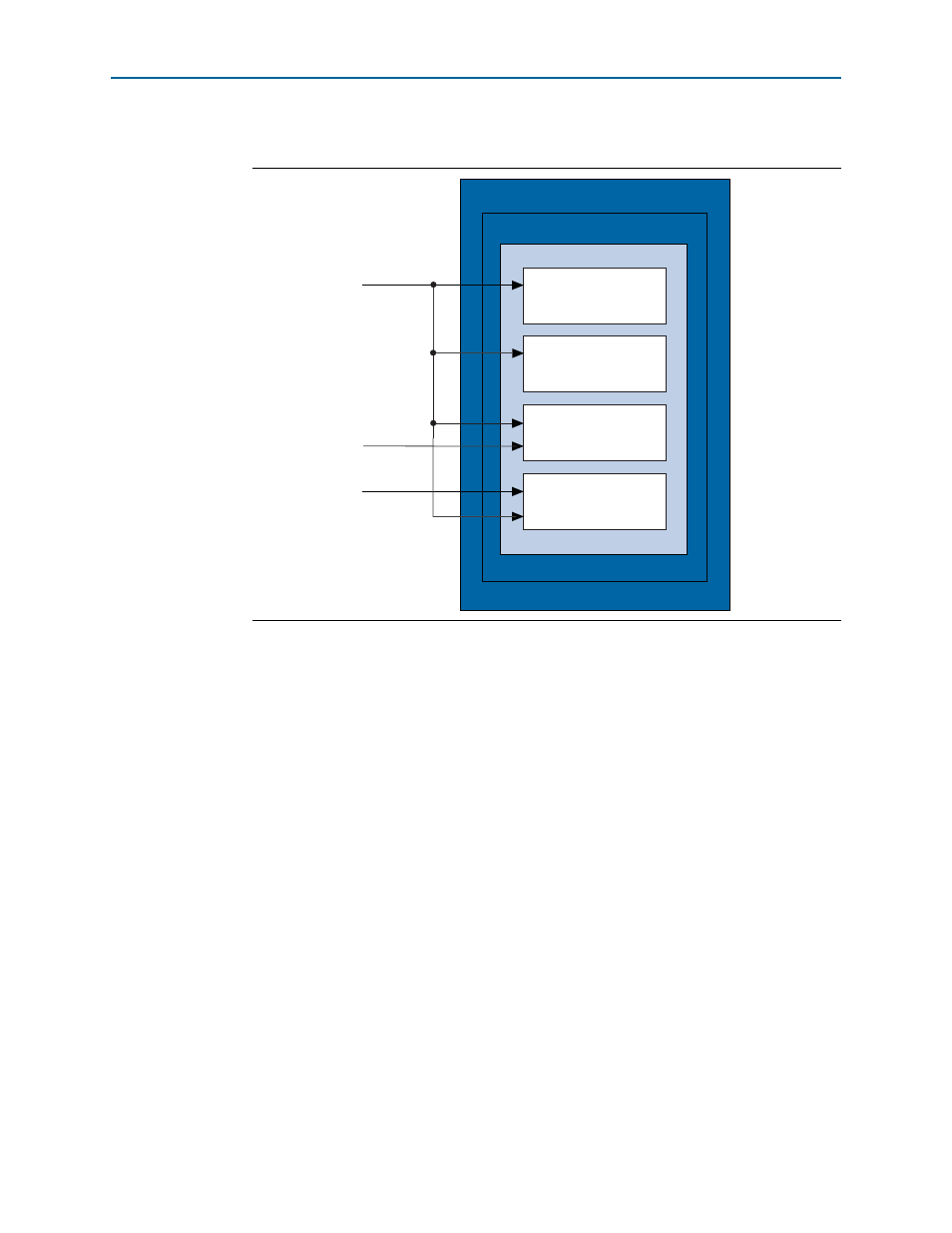Altera IP Compiler for PCI Express User Manual
Page 112

5–26
Chapter 5: IP Core Interfaces
Avalon-ST Interface
IP Compiler for PCI Express User Guide
August 2014
Altera Corporation
provides a simplified view of the logic controlled by the reset signals.
For root ports, srst should be asserted whenever l2_exit, hotrst_exit, dlup_exit,
and power-on-reset signals are asserted. The root port crst signal should be asserted
whenever l2_exit, hotrst_exit and other power-on-reset signals are asserted.
The IP Compiler for PCI Express soft IP implementation (×8) has two reset inputs,
npor
and rstn. The npor reset is used internally for all sticky registers that may not be
reset in L2 low power mode or by the fundamental reset. npor is typically generated
by a logical OR of the power-on-reset generator and the perst# signal from the
connector, as specified in the PCI Express Card Electromechanical Specification.
The
rstn signal is an asynchronous reset of the datapath state machines and the
nonsticky configuration space registers. Whenever the l2_exit, hotrst_exit,
dlup_exit
, or other power-on-reset signals are asserted, rstn should be asserted for
one or more cycles. When the perst# connector signal is asserted, rstn should be
asserted for a longer period of time to ensure that the root complex is stable and ready
for link training.
Figure 5–27. Reset Signal Domains
<variant>.v or .vhd
<variant>_core.v or .vhd
SERDES Reset
State Machine
Configuration Space
Sticky Registers
Datapath State Machines of
MegaCore Fucntion
Configuration Space
Non-Sticky Registers
srst
crst
altpcie_hip_pipen1b.v or .vhd
npor